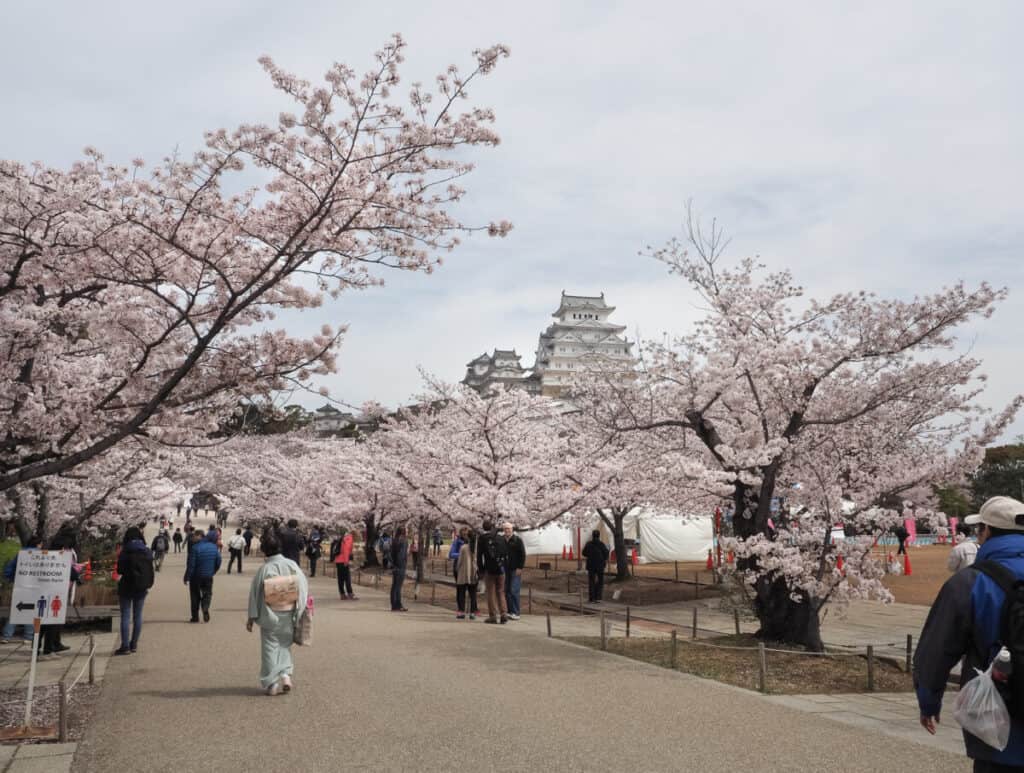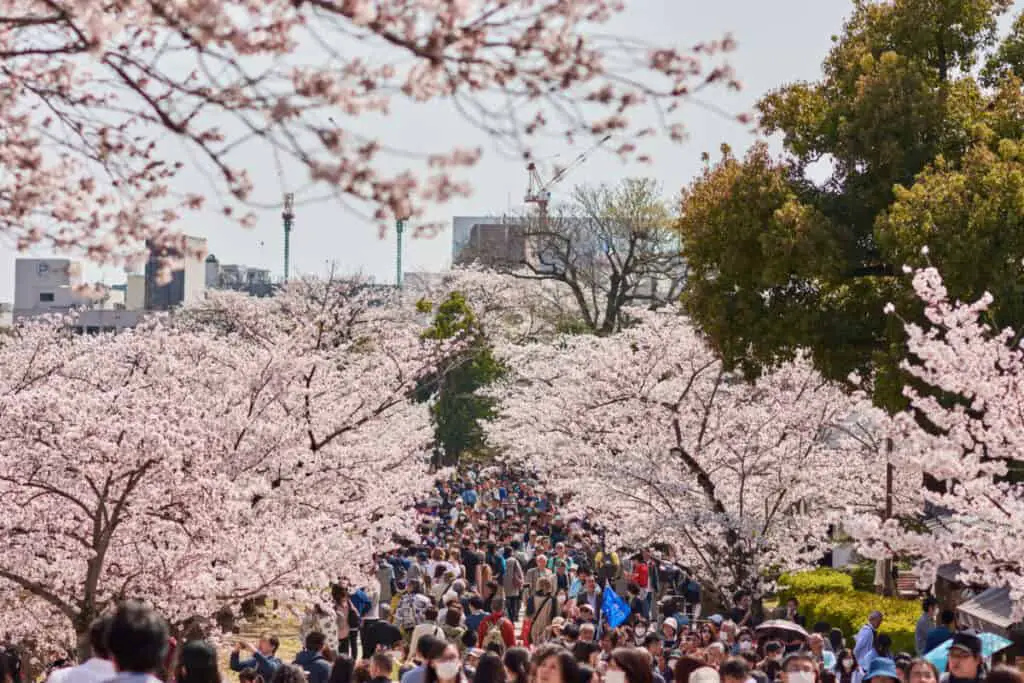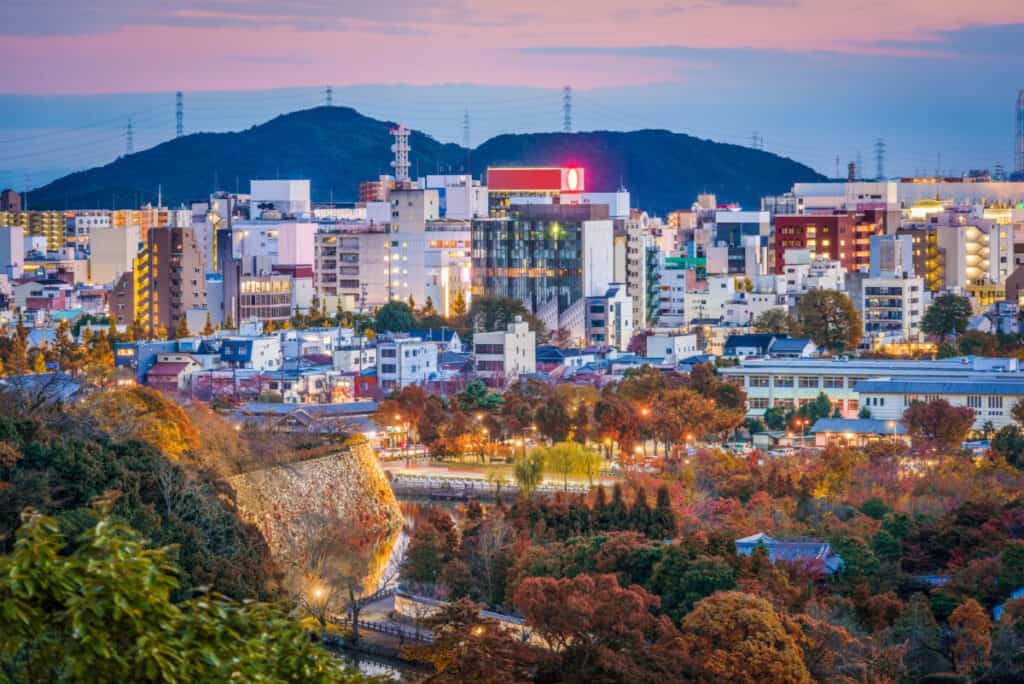Himeji Castle-(姫路城, Himejijō) is the most popular destination in Himeji, Japan. The castle is also known as White Heron Castle because of its stunning, white appearance. Because of its substantial size and elegant appearance, White Heron Castle is often considered one of Japan’s most beautiful castles.
There are many things to do at the beautiful and historically significant White Heron Castle. In addition to taking in the stunning architecture, people may participate in guided tours and take photos.

Typically, beautiful cherry blossoms surround Himeji Castle in spring. The gorgeous, bloomed cherry blossoms give Himeji Castle an ethereal feel.
Himeji Castle Location Via Google Maps
Himeji Castle
Himeji Castle is one of the only Japanese castles never destroyed by a natural disaster or warfare. Because of the flawless white appearance, Himeji Castle has become known as White Heron Castle. The substantial beauty is not the only reason that Himeji Castle is so admired.
Himeji Castle is one of twelve original castles still standing today. White Heron Castle still stands today while many other Japanese castles have been destroyed by sieges, wars, and natural disasters. It consists of gorgeous architecture.

As one of the earliest standing castles, it is a testament to some of Japan’s earliest architectural styles, representing some styles from as early as the 1400s. It also combines several hundred other years’ worths of architectural designs, given the many expansions and renovations.
The History of Himeji Castle
Japanese Emperors prolonged the construction of White Heron Castle over several hundred years. Initially, the first building was built sometime in the 1400s and then continuously had additions and added construction by various dynasties and rulers.

It is one of Japan’s twelve original castles and has undergone intensive restoration and renovation processes before being opened to the public. In 2015, the Himeji Castle officials opened the interior of Himeji Castle to the public.
When visiting Himeji Castle, stay patient. Sometimes, the number of visitors is limited because of the space within the castle. Himeji Castle distributes numbered tickets to make it easier to see and enjoy the experience.
The rich cultural value of Himeji Castle has easily led this castle to become acclaimed as an official world heritage site. White Heron Castle is a beautiful part of Japan, but it also tells a great story about how advanced Japan’s architecture already was at this early date.

Japan’s architecture in the 1400s through the 1700s was more advanced than some of its architecture in the twentieth century, proving to historians they had some of the most knowledgable and skilled architects in the world in ages past.
Visiting Himeji Castle
Visiting Himeji Castle is a must-do for anyone who wants to experience one of Japan’s most fascinating pieces of history. Himeji is one of twelve original castles that still stand to this day.
Thousands of people visit Himeji Castle each year for different reasons. Some people are drawn to this historical site for personal reasons, like photography or historical interest. Others come for the beautiful experience of seeing this amazing castle in person.
Generally, the most popular times of year to visit Himeji Castle are in spring and summer, when the outdoor weather is the most beautiful. During this time of year, a myriad of flowers are also in bloom, and wildlife is highly active.

The castle is oddly shaped, with several wings which were initially designed for defensive reasons. Himeji Castle is appreciated for its beautiful cherry blossoms on its grounds, which typically bloom in April.
Sannomaru
The Sannomaru is one of the most commonly explored areas for visitors. It is a large lawn lined with cherry trees. This free area is accessible through the large admission-free Otemon Gate, which leads directly into the lawn.
At the end of the courtyard, you can find a ticket booth leading into the paid areas of the castle.

Hishi Gate
The Hishi Gate is the convenient entrance from the Sannomaru into the main building.

Labyrinth
After entering this gate, visitors walk through a long labyrinth of twists and turns. The twists and turns of this maze were designed to give the castle its unique appearance. It was also part of its defensive structure to confuse enemies.
Visitors will continue until they enter the main entrance on the lower level.

Interior
Patrons will explore the castle’s interior, climbing from the bottom to the top using a staircase. Each floor will continue to get smaller, which fits the layout of the castle.
Although there is no excessive explanation for much of the various displayed items, there are a few multilingual signs.
To exit, you must return the way you came.

Nishinomaru
The Nishinomaru is the former residence of the princess. Exploring this area is optional to visitors of the Himeji Castle, although it is highly recommended for anyone planning to visit the castle.

Events at Himeji Castle
People come from all across the world to visit Himeji Castle. There are many events that draw nearby people to the beautiful White Heron Castle each year, including cherry blossom viewing (hanami) during spring.
Cherry Blossoms Viewing (Hanami)
Each year in April, as the cherry blossoms bloom, people come to Himeji Castle to celebrate their new blooms. The castle yard, which is lined with cherry blossom trees, becomes lively with flowers.
During spring, people picnic in the free, public lawn area on blankets. They also come to take pictures and enjoy the festive atmostphere.

Golden Week
Golden week is a annual holiday lasting one week which Japanese people celebrate several holidays, including Showa Day, Constitution Day, and more. Golden Week is one of the most popular holiday seasons. Many people come to celebrate at Himeji Castle under the blooming cherry blossoms.
Traveling to Himeji Castle
Many transportation options can get you to Himeji Castle. The prices and amount of time it takes to travel will vary based on the option. Depending on your budget and schedule, choosing some options might be more viable than others.

Taxi
Taxi rides are the most expensive way to travel to Himeji Castle. Taxi rides from the bus station take around five minutes and cost 750 yen, one way. The positive to riding in a taxi is the seclusion and privacy from other visitors.
Bus
The most frequent way that people travel to Himeji Castle is by taking the bus. If you are already in the area, you use the JR Himeji Station, Shinki Bus 8, to directly travel to Mount Shosha. A transportation bus will take you from the station to Himeji Castle.

Himeji Station Official Website (Google Translate Needed)
Using a transportation bus from the Himeji Station costs 100 yen one-way, and it takes around five minutes. The time to ride a public bus from the station to Himeji Castle is the same amount of time it takes to travel by taxi for one-seventh of the cost.
Taking a night bus from Tokyo is the most affordable option if you are traveling long distances. A one-way ticket from Tokyo to Himeji Station is between 3,000 and 10,000 yen, depending on the discounts and number of stops. It takes roughly ten hours to travel by bus from Tokyo to Himeji Castle.
Night Buses From Tokyo To Himeji
Walking
The walk might take up to twenty minutes from the station, depending on your speed. It can be tiresome for people in older ages or young children. It can also be tiresome on hot humid days.
Himeji Castle Official Website
Virtual Tour Of Himeji Castle









